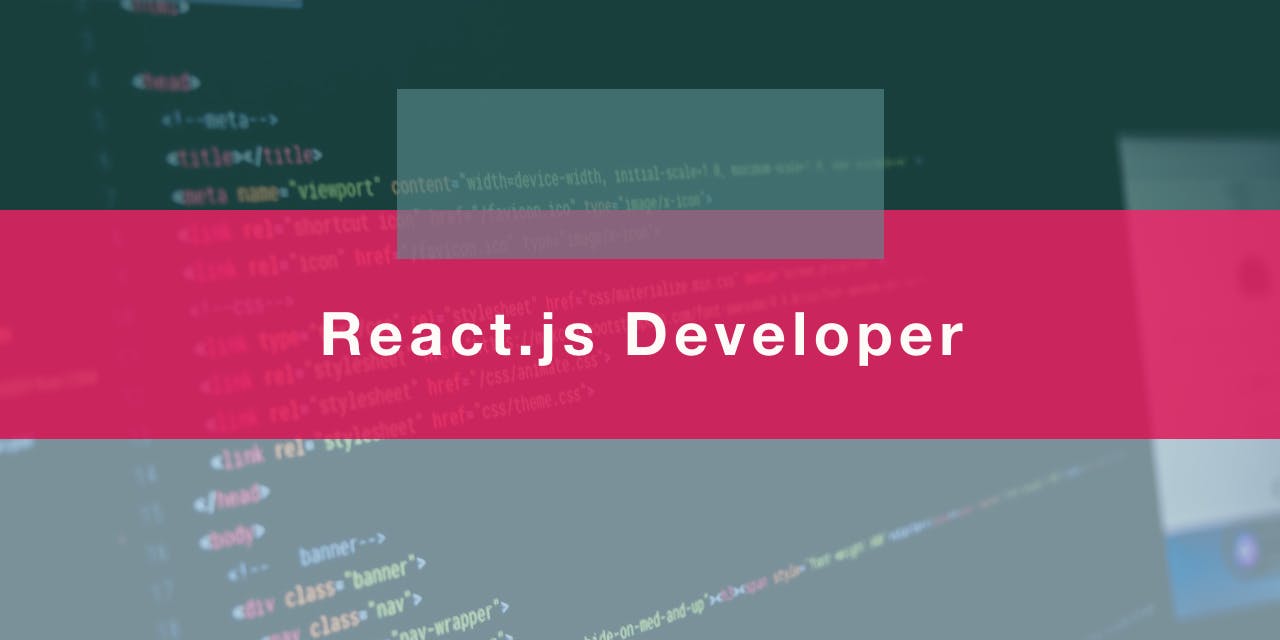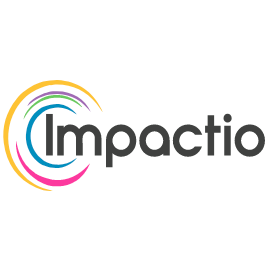What Does a React.js Developer Do?

This article will talk about the preferred JavaScript library. React.js better known as React, works to build user interfaces. It is a Declarative, Component-based, and easy to learn Library.
React helps the developer design simple views in each state of development of the application. It updates and renders the right component when there is a data update. Encapsulated components are built, and then turned into complex UI´s. The logic is written in JavaScript, not in templates. The data is then passed through the app and to the DOM. It´s the most efficient JavaScript library at the time to predict code and to debug.
Web Version, Mobile Version
It´s not only for web development, but it also has its version for mobile development too. The mobile version is called React Native. In React, you can develop new features without rewriting code. You can also render the application on the server using Node.
A React.js Developer is part of the front-end development team. The use of concepts and workflows such as Redux, Flux, and Webpack is a requirement to be a proficient React.js Developer.
In-depth knowledge and experience in JavaScript, both for the front-end and for the server are required in any job needing a React developer. Your duty is to build solid and modern user interfaces that can adapt to the application´s standards.
Front-End Development
As a front-end developer, the React developer works with design thinking, prototyping, implementation, and finally development. The teams have concurrent meetings to discuss about the interface and the application.
The main idea for the user interfaces is to help the user have a memorable experience while using the app. They should be able to say that they like the app without being asked.
Front-end skills are required for this job as React is not a programming language itself. You must know JavaScript fully, HTML, and CSS.
Just to be clear of how big React is, the entire Facebook´s codebase, which is composed of over 20,000 components, is based on React. Not only the Facebook platform itself, but the entire Facebook company, which includes WhatsApp and Instagram.
React is ready to be used at all levels and speeds. If you want to use React to add some interactivity to your webpage or build a fully React-based complex app, React is ready to be used. The point being, there is no minimum use to get started.
You can try React without running it in your own code editor. There are several online coding playgrounds where you can realize if React is for your or if not. React can be tested in CodePen, CodeSandbox, Glitch, or Stackblitz.
You can also download an HTML file they provide, and you are able to play around and edit it. You can open it from the local filesystem of your browser. It is recommended by the React community to use simple demos in this file, not entire applications.
If you know JavaScript but you are interested in learning React, you have two choices. Either a theoretical tutorial or a practical guide. If you prefer to learn by doing, you can use the practical tutorial. If you learn better by concepts, definitions, and processes, you can use the official React guide.
One of the most notable features that React offers is the use of a virtual Document Object Model. The Virtual DOM. React creates a data structure that adapts to the internal memory within the cache. After computing the differences it updates the browser´s DOM. The whole process has its name and the name is Reconciliation. While the react libraries only render some of the subcomponents, this feature allows to render each change. There is no more need of recalculating the CSS, the layout, and the rendering to each separate page.
Lifecycle Methods
There are also Lifecycle methods that developers commonly use. These work as hooks to allow the execution of code at different points in the components´ lifetime.
- 'Should ComponentUpdate' lets the developer prevent unnecessary re-rendering of the component by returning false if a render is not required.
- 'ComponentDidMount' is called after the component mounts. This is commonly used to trigger the data that is loading from a remote source via an API.
- 'ComponentWillUnmount' is called to unmount. This is used to clear demanding dependencies that the component doesn’t need.
- 'Render', the most important and used lifecycle method is called every time the component is updated. Later on, being reflected on the user interface.
In conclusion, React is the most used JavaScript library. Some confuse it for a framework, but it is a library. It has its web version called React, and its mobile version called React Native. The mobile version allows you to build Native apps, as the name describes it. The entire Facebook corporation uses React, for the Facebook platform and for other services such as WhatsApp and Instagram too. In-depth knowledge of JavaScript is required to build using react. React is one of the most used tools to build modern and solid user interfaces.
Related Articles

This article will talk about the preferred JavaScript library. React.js better known as React, works to build user interfaces. It is a Declarative, Component-based, and easy to learn Library.
React helps the developer design simple views in each state of development of the application. It updates and renders the right component when there is a data update. Encapsulated components are built, and then turned into complex UI´s. The logic is written in JavaScript, not in templates. The data is then passed through the app and to the DOM. It´s the most efficient JavaScript library at the time to predict code and to debug.
Web Version, Mobile Version
It´s not only for web development, but it also has its version for mobile development too. The mobile version is called React Native. In React, you can develop new features without rewriting code. You can also render the application on the server using Node.
A React.js Developer is part of the front-end development team. The use of concepts and workflows such as Redux, Flux, and Webpack is a requirement to be a proficient React.js Developer.
In-depth knowledge and experience in JavaScript, both for the front-end and for the server are required in any job needing a React developer. Your duty is to build solid and modern user interfaces that can adapt to the application´s standards.
Front-End Development
As a front-end developer, the React developer works with design thinking, prototyping, implementation, and finally development. The teams have concurrent meetings to discuss about the interface and the application.
The main idea for the user interfaces is to help the user have a memorable experience while using the app. They should be able to say that they like the app without being asked.
Front-end skills are required for this job as React is not a programming language itself. You must know JavaScript fully, HTML, and CSS.
Just to be clear of how big React is, the entire Facebook´s codebase, which is composed of over 20,000 components, is based on React. Not only the Facebook platform itself, but the entire Facebook company, which includes WhatsApp and Instagram.
React is ready to be used at all levels and speeds. If you want to use React to add some interactivity to your webpage or build a fully React-based complex app, React is ready to be used. The point being, there is no minimum use to get started.
You can try React without running it in your own code editor. There are several online coding playgrounds where you can realize if React is for your or if not. React can be tested in CodePen, CodeSandbox, Glitch, or Stackblitz.
You can also download an HTML file they provide, and you are able to play around and edit it. You can open it from the local filesystem of your browser. It is recommended by the React community to use simple demos in this file, not entire applications.
If you know JavaScript but you are interested in learning React, you have two choices. Either a theoretical tutorial or a practical guide. If you prefer to learn by doing, you can use the practical tutorial. If you learn better by concepts, definitions, and processes, you can use the official React guide.
One of the most notable features that React offers is the use of a virtual Document Object Model. The Virtual DOM. React creates a data structure that adapts to the internal memory within the cache. After computing the differences it updates the browser´s DOM. The whole process has its name and the name is Reconciliation. While the react libraries only render some of the subcomponents, this feature allows to render each change. There is no more need of recalculating the CSS, the layout, and the rendering to each separate page.
Lifecycle Methods
There are also Lifecycle methods that developers commonly use. These work as hooks to allow the execution of code at different points in the components´ lifetime.
- 'Should ComponentUpdate' lets the developer prevent unnecessary re-rendering of the component by returning false if a render is not required.
- 'ComponentDidMount' is called after the component mounts. This is commonly used to trigger the data that is loading from a remote source via an API.
- 'ComponentWillUnmount' is called to unmount. This is used to clear demanding dependencies that the component doesn’t need.
- 'Render', the most important and used lifecycle method is called every time the component is updated. Later on, being reflected on the user interface.
In conclusion, React is the most used JavaScript library. Some confuse it for a framework, but it is a library. It has its web version called React, and its mobile version called React Native. The mobile version allows you to build Native apps, as the name describes it. The entire Facebook corporation uses React, for the Facebook platform and for other services such as WhatsApp and Instagram too. In-depth knowledge of JavaScript is required to build using react. React is one of the most used tools to build modern and solid user interfaces.
Related Articles
